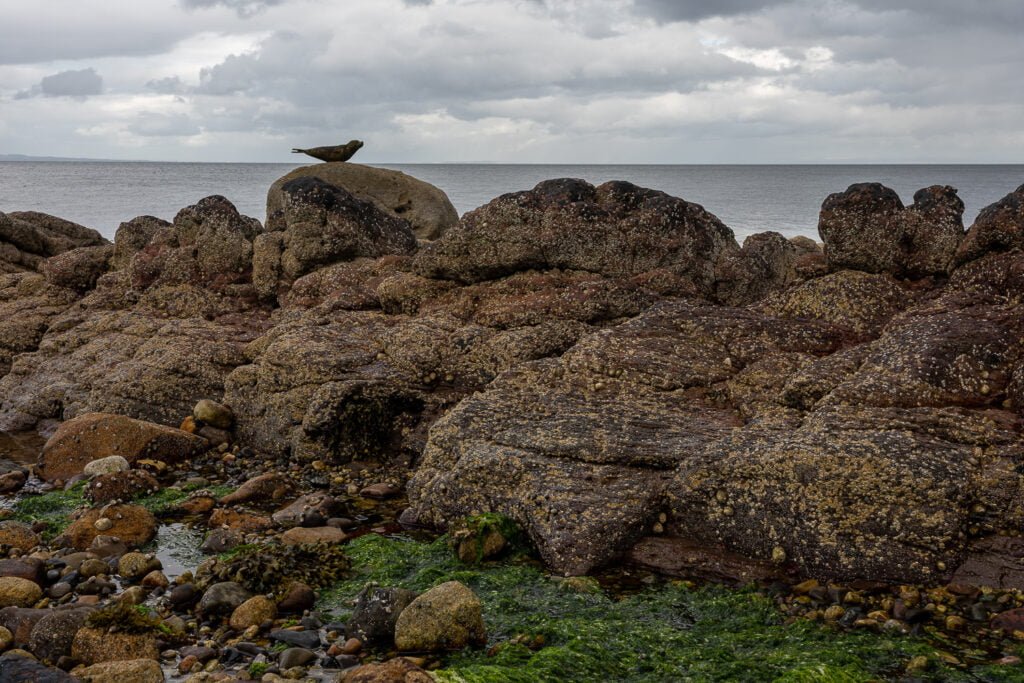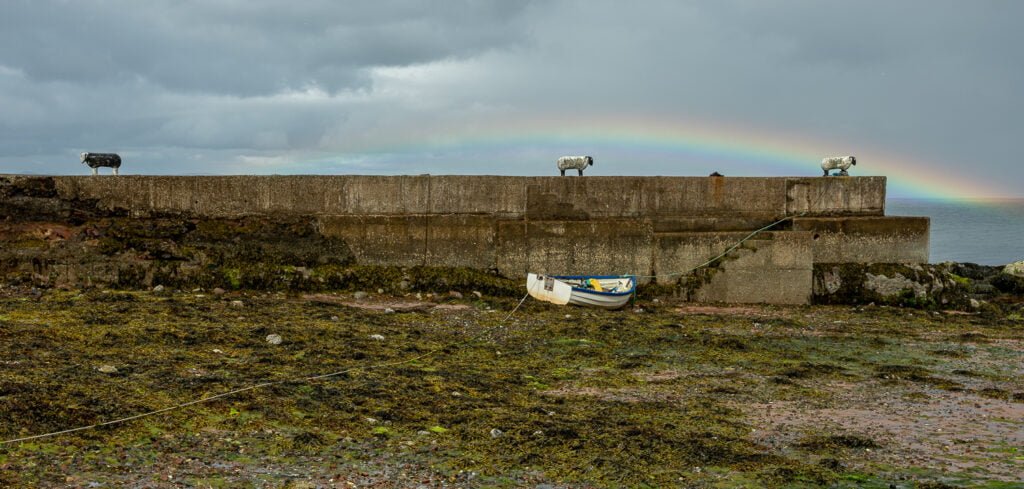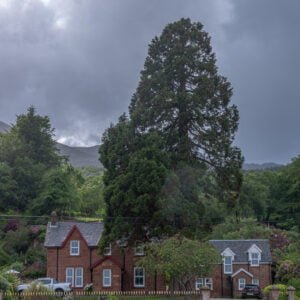The Great Stone Project 2022 : The coast road from Brodick to Lochranza on the Scottish Isle of Arran winds its way alongside the Firth of Clyde, the extended vista of the mainland of Scotland eventually being replaced by the island of Bute. I had arrived on the morning of 14th June 2022 on the ferry from Ardrossan, the rain heavy but there was no wind. The small waves gently lapped onto the rocky foreshore; my destination was Machrie Moor and the standing stones there. I knew I could cross the island to the stones by taking the B880, or locally known as ‘The String’, a narrow road which bisects Arran, but I wanted to journey along the coast to see the harbour of Lochranza, where I had stayed once.
The small village of Corrie is some 10 miles from Brodick and is comprised of a series of clusters of cottages and houses lining the inland side of the A841 main road. There is a shop, a church and a village hall, and the Corrie Hotel, built in 1894. Corrie has two separate harbours, just over half a mile apart. The more northerly of Corrie’s two harbours is often called Corrie Port and was the stopping off point of the steamers that, from the mid 1800s, linked many of Arran’s coastal villages with a wider network of Clyde ports. Today, Corrie Port is home to a couple of small boats and sometimes to a replica Viking longboat used by the Arran Viking Society.
The more southerly of Corrie’s two harbours is known as Sandstone Quay. Here sandstone dug from a nearby quarry in the cliffs above the village was loaded onto puffers for shipment to the mainland. Today it is the largest and best used of the harbours along this stretch of coastline. As I approached this quay I noticed the seal perched on the rock. It looked regal against the horizon and investigating I quickly discovered it was a wooden sculpture. I later discovered it was carved by Marvin Elliott, a local sculptor with a showroom in the adjacent village of Sannox. The seal is so lifelike it has assumed local notoriety and apparently was once washed away in a storm to be returned and restored later.

In the harbour itself, there were 3 stone sheep on the harbour wall with a rainbow arced above them. The sheep were apparently obtained from a tradeshow on the mainland and were fashioned on the jetty to act as fasteners for the ropes of boats. Initially they look quite realistic but incongruous; unlike the seal, it does not take too long to recognise them as stone models.
The rainbow was particularly beautiful; it was a low, extended arc and seemed to penetrate the sea just beyond the jetty wall. Of course that was an optical illusion; chasing the rainbow’s end would have been a forlorn effort. But I was particularly moved by the surreal nature of these disparate features, as was the child and his father who joined me to look over the scene. We began chatting and he introduced himself as living in the former quarry master’s house and asked if I wanted to see the waterfall and sculpted garden made by the former owner, just across the road. Of course I accepted and we scurried through the now falling shower to his house.

Just literally across the road we walked between the 2 properties, across a lawn towards an increasing roar of a waterfall. Cascading down a narrow channel from a terrace above was a small but powerful torrent of water. He led us up a winding path to the terrace and showed me the complex water system established there, the banks of local plants and the sculpted, built walls and landscaped features, all developed from the sandstone rock which had once been mined from this very cliff and exported from the harbour across from his house. There was still much to uncover; it was a work in progress, however the land still being fashioned by the hand of man from an ancient landscape.
